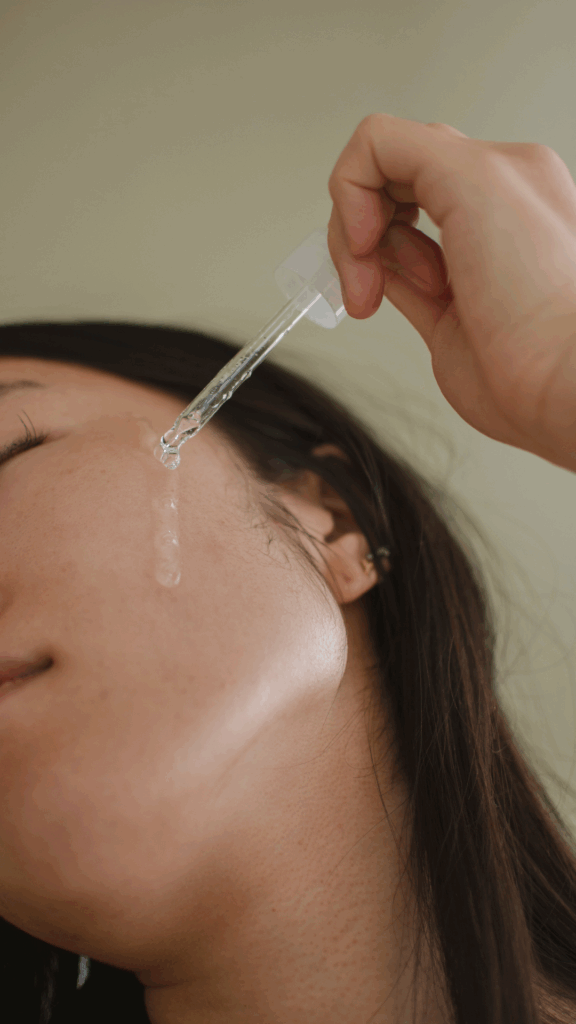
During my pregnancy, my friends and coworkers would often tell me how great my skin was. You’re glowing, they’d say. And honestly, my skin did feel plump, calm, and surprisingly balanced — even with all the chaos going on inside.
But after birth? Everything changed.
My once-glowy skin turned so dry, tight, and moody. The dark spots deepened. My cheeks flushed without warning, some fine lines creeped up on my forehead.
And honestly, I stopped noticing, because I stopped looking. If I’m going to be completely honest, postpartum skincare didn’t even cross my mind. I was trading serums for sleep, SPF for a swaddle, and face masks for burp cloths.
But the truth is, I didn’t feel bad about it. Not really. I was (and still am) so in love with my baby that everything else just faded into the background.
But when I did catch a glimpse of myself in the mirror, it stung a little. Not because I missed the old me, but because I missed caring for myself.
If you’re here, maybe you’re feeling that too.
Let me say this clearly, your postpartum skin isn’t a setback. It’s just a new chapter, a reflection of everything your body has carried, birthed, and held. There’s no shame in needing rest, and there’s no rush to bounce back.
In this guide, I’ll walk you through how and why your skin changes after birth, the common postpartum skin concerns, safe and effective ways to care for your skin (especially if you’re breastfeeding), and the gentle routine I personally returned to when I was ready.
Before we dive in: This post is for informational purposes only and isn’t a substitute for professional advice. Please speak to your GP, dermatologist, or healthcare provider if you have specific concerns, especially if you’re breastfeeding.
Why Does Your Skin Change After Giving Birth?

Your body goes through so much during pregnancy, and your skin? It’s part of that journey too.
For many mums, skin feels glowy and balanced during those months, thanks to a lovely boost in hormones like oestrogen and progesterone. But after birth, everything shifts. Hormone levels drop quickly, especially if you’re breastfeeding, and suddenly your skin might not feel like yours anymore.
Maybe it’s drier or flakier. Maybe it’s more sensitive, or breaking out in ways it didn’t before. You might notice dark patches, a duller tone, or products that used to work now leave you irritated. You’ll feel confused, and frustrated (I know I did), but it’s also really common.
These changes are tied to your body’s natural hormonal roller coaster, increased water loss, slower cell turnover, and even a weakened skin barrier.
And then there’s life itself: broken sleep, stress, changes in your diet, and barely a minute to do your old routine. It’s a whole lot.
But just because your skin feels different doesn’t mean it’s hopeless. It’s simply asking for a little more care. Not perfection. Just small, gentle steps, one layer at a time.
Common Postpartum Skin Concerns
I’ll admit it. I used to compare my skin to other mums I saw on social media. I’d catch myself wondering, “Why does her skin still look so fresh, while mine feels dull and tired?” And yeah, it sucks.
I know that no one’s postpartum skin journey looks the same. I really do. But sometimes I have to remind myself (over and over) just to let that truth sink in.
Some changes show up right away. Others creep in weeks, even months, later… just when you think your skin’s finally settling down. And that’s okay. You’re not doing anything wrong.
Here are the common postpartum skin problems you might notice:
Dryness and Dehydration
Your skin may feel tight, flaky, or rough, especially if you’re breastfeeding. Your body’s working overtime to keep the baby nourished, and sometimes that means your own hydration takes a backseat. Hormonal fluctuations and increased water demand can change skin texture and cause dryness.
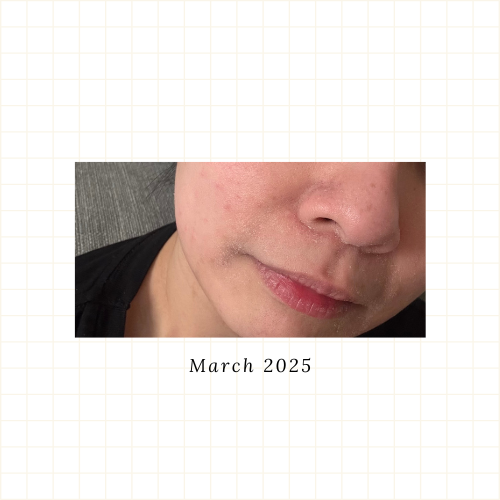
Increased Sensitivity
Products you used to love might suddenly sting or cause redness. This is exactly what happened to me. But I found out that a weakened skin barrier and hormonal shifts can make skin more reactive than usual. Some moms may experience heightened sensitivity weeks after giving birth due to hormonal changes.

Hormonal Breakouts
Chin, jawline, or cheek acne is common after birth. Even if you didn’t deal with breakouts before, postpartum hormones (especially the drop in oestrogen) can stir things up. Postpartum acne can appear in many forms, including whiteheads, blackheads, pustules, and painful cysts.

Melasma (Dark Spots or Patches)
You might notice dark patches on your cheeks, forehead, or upper lip that just won’t fade, even after pregnancy. That’s melasma, often called the “mask of pregnancy.” It’s super common and can stick around (or get darker) after birth, especially if you’re spending time in the sun without protection.

Dullness and Uneven Texture
If your skin feels a bit “meh” right now, like it’s lost its glow or just looks extra tired, it’s not in your head. Between slower cell turnover, broken sleep, and all the emotional load that comes with new motherhood, your skin’s just catching up. But don’t worry, with a little care (and patience), that glow does come back. Promise.
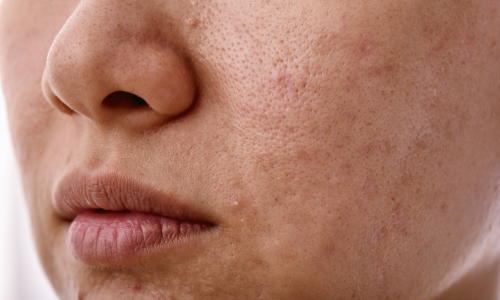
None of these mean you’ve neglected yourself. They’re signs your skin is adjusting, just like you are!
Can Breastfeeding Cause Dry Skin?
Yes, it can. Breastfeeding triggers a rise in prolactin and a drop in oestrogen. This hormonal shift that can leave your skin feeling dry, tight, or extra sensitive.
Even if you’re not breastfeeding, like me, postpartum dryness is still common. Hormone changes, sleep loss, stress, and the overwhelming feeling of being a new mum can all affect your skin’s moisture levels.
Simple things can help: drink water regularly, use a gentle, hydrating moisturiser, and focus on soothing ingredients like ceramides or hyaluronic acid. Think of it as small, nourishing care, not one more thing to get perfect.
Skincare Ingredients to Avoid While Breastfeeding
When you’re breastfeeding, it’s important to be mindful of the skincare products you use, as certain ingredients can be absorbed into your bloodstream and potentially affect your baby.
Here’s a brief guide:
Avoid These Ingredients
Retinoids (retinol, tretinoin)
These vitamin A derivatives are commonly used for anti-aging and acne treatments. However, they can be absorbed into the bloodstream and may pose risks to your baby.
High-dose Salicylic Acid
While low concentrations (2% or less) in over-the-counter products are generally considered safe, high-dose formulations, such as peels or oral medications, should be avoided during breastfeeding.
Hydroquinone
Used for skin lightening, hydroquinone has a relatively high absorption rate, and its safety during breastfeeding hasn’t been established. It’s best to avoid this ingredient.
Safe Alternatives in Moderation
Hyaluronic Acid
A hydrating ingredient that helps retain moisture in the skin. It’s generally considered safe for use during breastfeeding.
Niacinamide (Vitamin B3)
Known for its anti-inflammatory properties and ability to improve skin elasticity, niacinamide is safe and beneficial during breastfeeding.
Azelaic Acid
Effective for treating acne and pigmentation issues, azelaic acid is considered safe for use while breastfeeding.
📣 Again, always consult with your healthcare provider or a dermatologist before introducing new skincare products into your routine during breastfeeding.
What’s the Best Skin Care After Giving Birth?
When it comes to the best skin care after giving birth, I found out that the simpler is better, especially when you’re sleep-deprived, touched out, and just trying to keep up with the day.
Why? Because not only it’s proven effective, but it will also help you stick with it.
Start with the basics: a gentle cleanser, a barrier-supporting moisturiser, and broad-spectrum SPF. That’s enough. Truly. If you want to add a little extra, a hydrating mist or serum can give your skin a refreshing boost without overcomplicating things.
For me, going back to just cleansing and moisturising was my reset. It felt doable. Like a small way to reconnect with myself without pressure or performance.
So if you’re standing at the sink wondering where to begin, start small. Simple is still effective. A few consistent steps, done gently, can go a long way in helping your skin feel nourished again.
How Do I Take Care of My Skin After Giving Birth?
So I mentioned how starting small helped me reset and stick to my routine, and I meant it. If you’re wondering how I take care of my skin after giving birth, the answer isn’t a shelf full of products.
In fact, starting with what you already have is often the most sensible choice. There’s no pressure to overhaul your routine unless something isn’t working anymore.
If a product suddenly starts reacting differently — and that can happen postpartum — it’s okay to swap it out. Just try to choose something that matches your current skin concern (like dryness, dullness, or sensitivity) so your routine stays purposeful, not overwhelming.
Here’s a simple routine you can try:
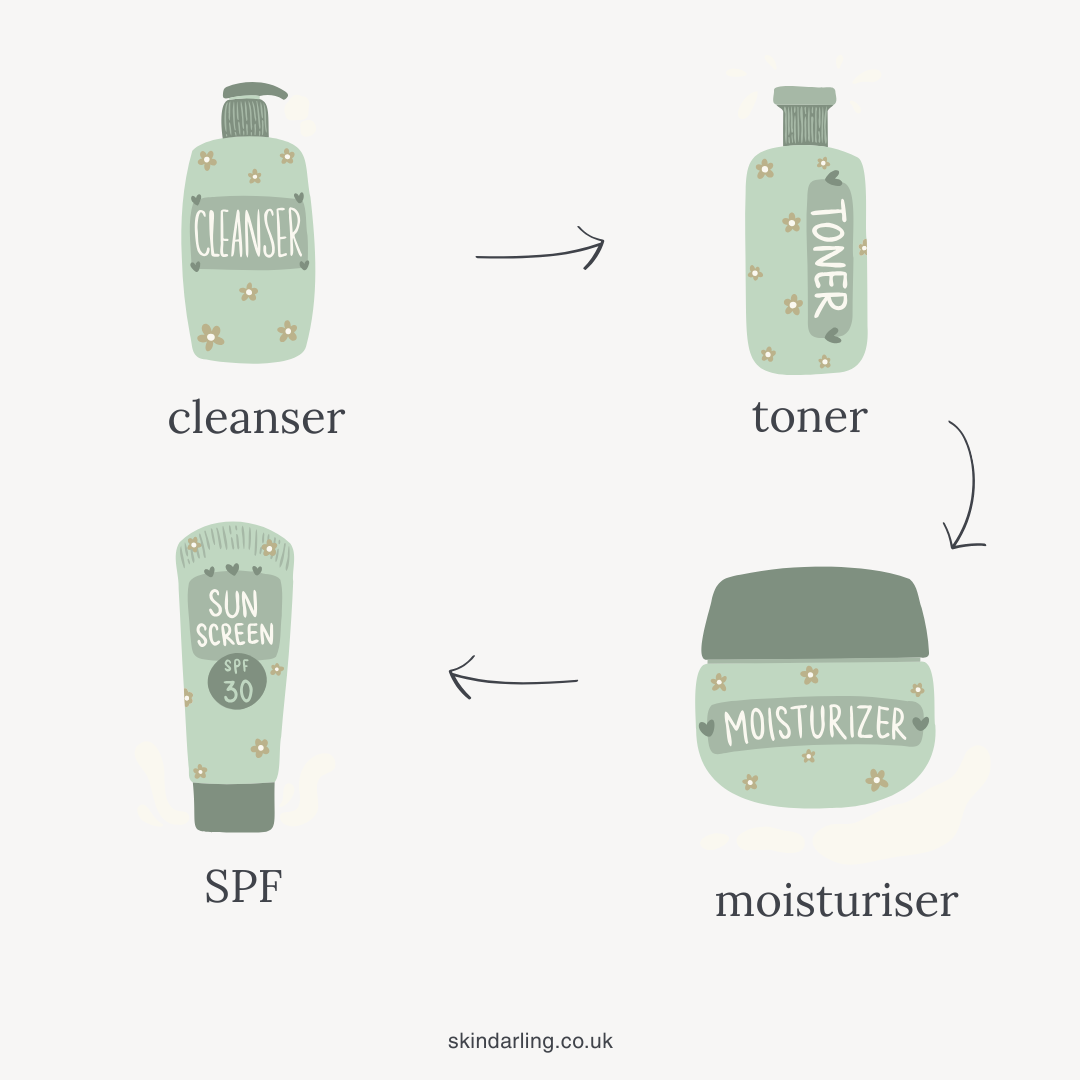
That’s it. This covers the basics: cleansing without stripping, layering in hydration, locking it in, and protecting your skin from further stress especially during daytime.
If you’re doing this much, you’re already doing enough.
A few real-life tweaks that made it easier for me:
Decant your toner in a spray bottle – quick to use, no cotton pads needed. Just use your hands, and pat gently.
Pat your skin with a damp cloth – after cleansing, instead of patting your skin dry, use a damp cloth. This is such a game changer for me, especially as someone with dry, dehydrated skin.
Products within reach – I kept mine at the sink and by my bed, because some nights, that’s where my skincare happened
You don’t need to be perfect. You just need doable. And that’s more than enough.
Postpartum Skincare Routine: What to Add (and When)
Once your basic routine feels steady, it’s natural to start wondering if you should add more. Maybe you’re eyeing those brightening serums, exfoliants, or actives you used to swear by.
Here’s what I’d gently say: don’t rush like I did. I thought my skin was ready and jumped back into actives too soon… and ended up wrecking my already fragile skin barrier. It set me back more than I expected.
Right now, your skin is still adjusting. Hormones are in flux, and your barrier might still be a bit sensitive, even if it looks fine on the surface.
Throwing too much at it too soon can do more harm than good. So for now, focus on recovery first, not results.
If and when you’re ready to reintroduce actives like AHAs, BHAs, or even retinoid alternatives, go gently. Start low and slow. This means:
- Choose lower concentrations
- Use them less frequently at first (e.g. 1–2x a week)
- Always pair with moisturiser and SPF
There’s no rush. Skincare isn’t a race — especially not now. Let your skin settle. Let it tell you what it needs. Then build from there, slowly and intentionally.
Postpartum Facial Treatments
I didn’t get my first facial until after giving birth, in my mid-30s.
For the longest time, I thought I didn’t need one. My skin had always been low-maintenance, and I figured a simple routine was enough. And it was — until postpartum hit.
Suddenly, my skin felt different. Drier, more reactive, harder to manage. So I gently encouraged myself to start getting facials every 4–6 weeks. And honestly, it’s been one of the kindest things I’ve done for myself. Not just for my skin, but for me.
An hour of quiet, care, and zero multitasking? Yes please!
If you’re considering it, look for options like hydration facials, barrier-repair facials, or anything focused on soothing and replenishing.
For me, skin concerns are sebaceous filaments, dry skin, and whiteheads. So I would always get hydrafacial, diamond peel (just around my nose), and dermaplaning.
Ask your esthetician or dermatologist what kind of facial treatment is best for your skin concern.
I think getting facials are supportive especially in that it makes your skincare routine more effective. My esthetician always tells me that having facials every month allows your skin to breathe, and I realise she’s absolutely right.
There’s no rush, no rulebook, and no perfect timeline. Whether you book one or skip it entirely, you’re still doing right by your skin.
Product Recommendations for Postpartum Skin
When it comes to the best postpartum skincare products, think gentle, hydrating, and supportive.
You don’t need to buy a whole new routine, but if you’re looking to replace a product that no longer works or simply want something that feels safer and more soothing, here are a few that have personally helped me.
These are grouped by product type to make things easy. I’ve included what each one targets and whether it’s generally considered safe for breastfeeding (based on current guidance and known ingredient profiles).
Cleansers
Cleansing is where everything begins. A gentle cleanse — morning or night — can help reset your skin without stripping it.
- Beauty of Joseon Green Plum Cleanser – A soft, low-pH gel cleanser that supports your skin barrier while gently lifting away dirt.
- SKIN1004 Madagascar Centella Light Cleansing Oil – A lightweight oil cleanser that melts away sunscreen or makeup and calms the skin at the same time.
Target: sensitive skin, barrier support, makeup removal
✔ Breastfeeding-safe
Moisturisers
Moisture is everything postpartum — especially when your skin feels tight, dull, or irritated.
- Etude House Soon Jung 2x Barrier Intensive Cream – Rich in panthenol and madecassoside to calm and protect the skin barrier.
- Purito Wonder Releaf Centella Moisturizer (Bamboo Cream) – Light but hydrating; great for layering or daytime use.
- Hada Labo Gokujyun Perfect Gel – Deeply hydrating, plumping, and fragrance-free. Feels like a drink of water for dry skin.
Target: barrier repair, dehydration, redness
✔ Breastfeeding-safe
Hydrating Serums & Treatments
If you’re ready to add a little more hydration or gentle repair, these are lovely options — nothing harsh or overly active.
- COSRX Advanced Snail 96 Mucin Power Essence – A cult-favourite for a reason. Hydrates, soothes, and helps with texture over time.
- Purito Wonder Releaf Centella Serum (Unscented) – Soothes redness and supports a compromised barrier.
- I’m From Mugwort Essence – A calming treatment for inflamed or stressed-out skin.
- Beauty of Joseon Glow Serum (Propolis + Niacinamide) – Gentle glow support, especially for dullness or uneven tone.
Target: hydration, inflammation, glow, barrier care
✔ Breastfeeding-safe (always patch test)
Nurse’s Reminder: While these products are generally considered low-risk, it’s still important to patch test before trying anything new, especially if your skin is feeling extra sensitive. And if you’re breastfeeding, navigating a skin condition, or unsure about an ingredient, it’s always worth checking with your GP, healthcare provider, dermatologist, or pharmacist first.
Your skin doesn’t need perfection, it just needs support. Pick what feels right for you and your skin right now.
Like motherhood, healing your skin doesn’t follow a straight path. Some days you’ll catch your reflection and feel a little more like yourself. Other days, your skin might feel dry, spotty, or just off. That’s normal. That’s part of it.
For some mums, it might take just a few months to feel like themselves again. For others, it takes longer. There’s no right or wrong.
I’m currently 12 months postpartum, and it was only last month that I finally started feeling good about my skin again. Not because it looked flawless, but because I stopped expecting it to “bounce back.” I stuck with a simple routine, gave my skin space to adjust, and slowly, it started to feel more balanced. More me.
So if you’re in that in-between place right now, please remember: it takes time. Be gentle.
Don’t compare your skin to someone else’s highlight reel. You’re caring for a whole new life, your skin will catch up.
I’d love to hear your story, too. Have you noticed changes in your skin postpartum? What’s helped you feel better in your skin again? Share in the comments — you never know who you’ll help by opening up.
Nurse’s Reminder: If you’re dealing with stubborn irritation, painful acne, or skin changes that feel overwhelming, please speak to your GP, healthcare provider, dermatologist, or pharmacist.

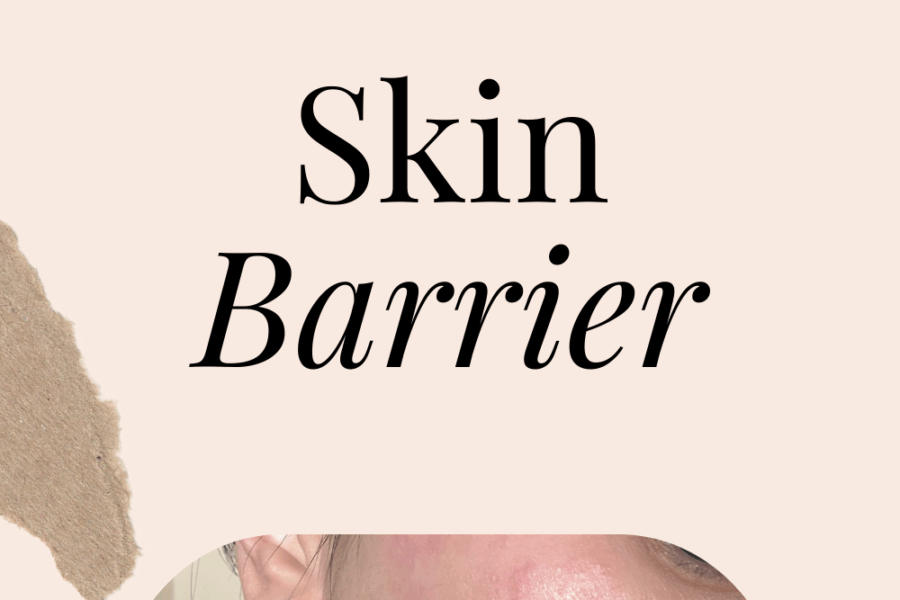
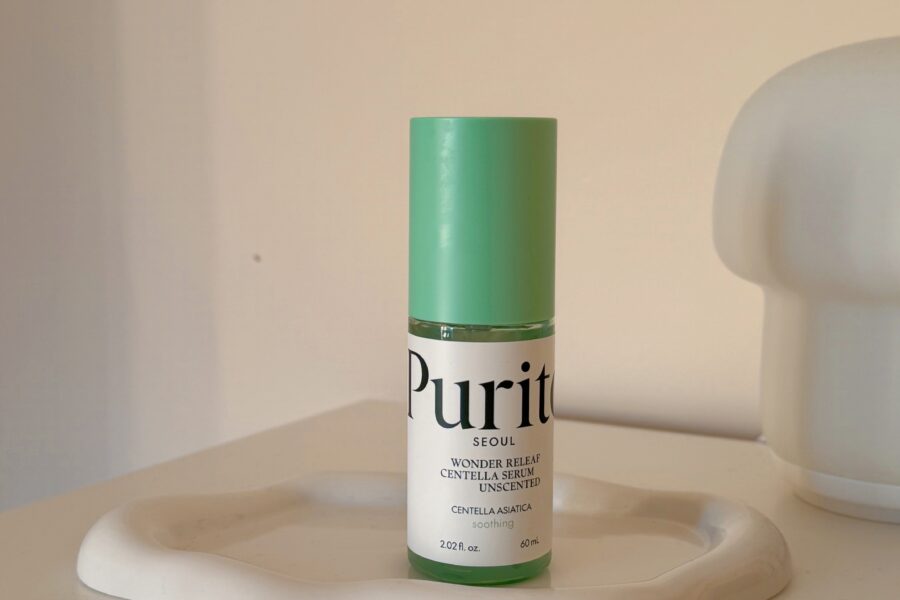


Leave a Reply